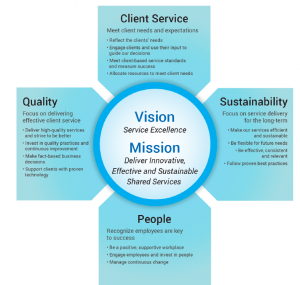Okay, for those readers who are inwardly groaning at seeing yet another article on that buzz word “innovation,” you can choose to flip down your mental blinders and ignore what I’m about to say altogether. Those of you who are unable to resist, however, can satisfy your curiosity and possibly gain a few takeaways that aren’t communicated in your average office meeting. Remember innovation is change!
 Research, please!
Research, please!
Start with a simple Google search, and see what Wikipedia has to say. Selecting the innovation style that best fits your situation is worth your time. I strongly encourage you to consider doing research on best practices and see what innovative processes are already out there that you could incorporate into your creative process. Reinventing the wheel can be exhausting, so look for that time saved to make your project truly awe-inspiring!
Inspiration strikes at any time so be prepared!
My supervisors and managers are used to me coming to them and saying, “I have an idea, but you may not like it.” Luckily my unit is quite progressive and encouraging, plus I was inspired by a visit to Google headquarters. There, ideas get posted on whiteboards and are reviewed as potential projects, which is a very cool and public version of the suggestion box. Google, after all, is a pretty leader to blaze the innovation trail.
Focus on the mission…
Innovation is part of any enterprise mission, so let’s see what we can do. Start with one of those basic tenets that we take for granted, communication — or what I really mean to say is the lack of it. For example, how many of you know what your department’s mandate is? Its vision? Its mission?

I have a poster-size display of my department’s mandate hanging on the exterior wall of my cubicle. This way I can remind myself of what I am supposed to be doing when I feel like I am getting absolutely nothing accomplished (we will cover that more under the upcoming posts).
If you look at the mission section above, you see the following:
“Deliver Innovative, Effective and Sustainable Shared Services”
So apparently to fulfill the department’s mission, I must be innovative, effective and sustainable.
Well hello, Innovation! A pleasure to finally meet you. Sorry that the bureaucracy was in the way of our meeting for so long.
Follow up, then communicate
For those of us who are not that one person who can complete projects singlehandedly, communication is key! Knowing what other assets and resources that your department may be able to provide and how to access them is crucial. Once you know what you have to work with, it’s time to put on that thinking cap and think outside the box (I hate that phrase by the way, as it’s overutilized, so apologies).
Anyways, now you know who you need to talk to and what resources you can leverage, so dive right in! Do you need to ask permission to go ahead and just do whatever you need to solve that problem that is bottlenecking your productivity? Or are you worried your supervisor going to tell you “No, we don’t do it that way”?
Government tend to behave conservatively and are averse to risk-taking. I learned that early in my career, when all fired up by new ideas and theories on risk-taking from a conference, I spoke with my manager. Dampening my enthusiasm, my manager said, “the government does not take risks. We only take calculated risks.”
Translation: If you do something innovative, it had better work. The negative reinforcement vibe was in full force that day.
Full steam ahead…
Now, things have changed. My current department’s view on innovation is a complete reversal of my previous experience because:
- Our Mission requires us to be innovative
- We have an innovation champion at the senior executive level
- We actively encourage a culture of innovation with various resources, means and activities to let staff and management incorporate innovation into our workplace.
You may try and possibly fail, but if you do not try, you WILL fail
How many of you want to innovate but hesitate because of the consequences if it fails? How many big projects or programs have already failed that were not innovative, yet when they fail, that department continues merrily as if nothing has happened out of the ordinary? Innovation must be first acceptable throughout your department from the top down. A champion is often necessary to remind those who are unwilling to accept innovation as part of the new corporate culture they exist in.
Finally, innovation is change and it scares people! So instead of stifling your creativity, you need a plan. Happily, GovLoop has provided you a blueprint to use.
So, do your research. Get your resources and allies on board and up to speed. Practice your elevator pitch to get them enthused. Show them the money. Make it real. Do not worry if it fails. Celebrate when it works.
I am changing my pitch by the way. It’s now this:
“I have an idea!”
Happy innovating!
Ken Lee is currently a GIS Officer with the GeoNOVA Secretariat of the Province of Nova Scotia with interests in Innovation, Leadership, Policy, Diversity, Employee Engagement, ITIL and Lean 6 Sigma for Government. His next step? Let’s find out!





I really like the conversational tone you took with your piece Ken! Innovation is so critical to the modern workforce, and I’m glad you gave us actionable items to go through when thinking of innovative changes to our workplaces.